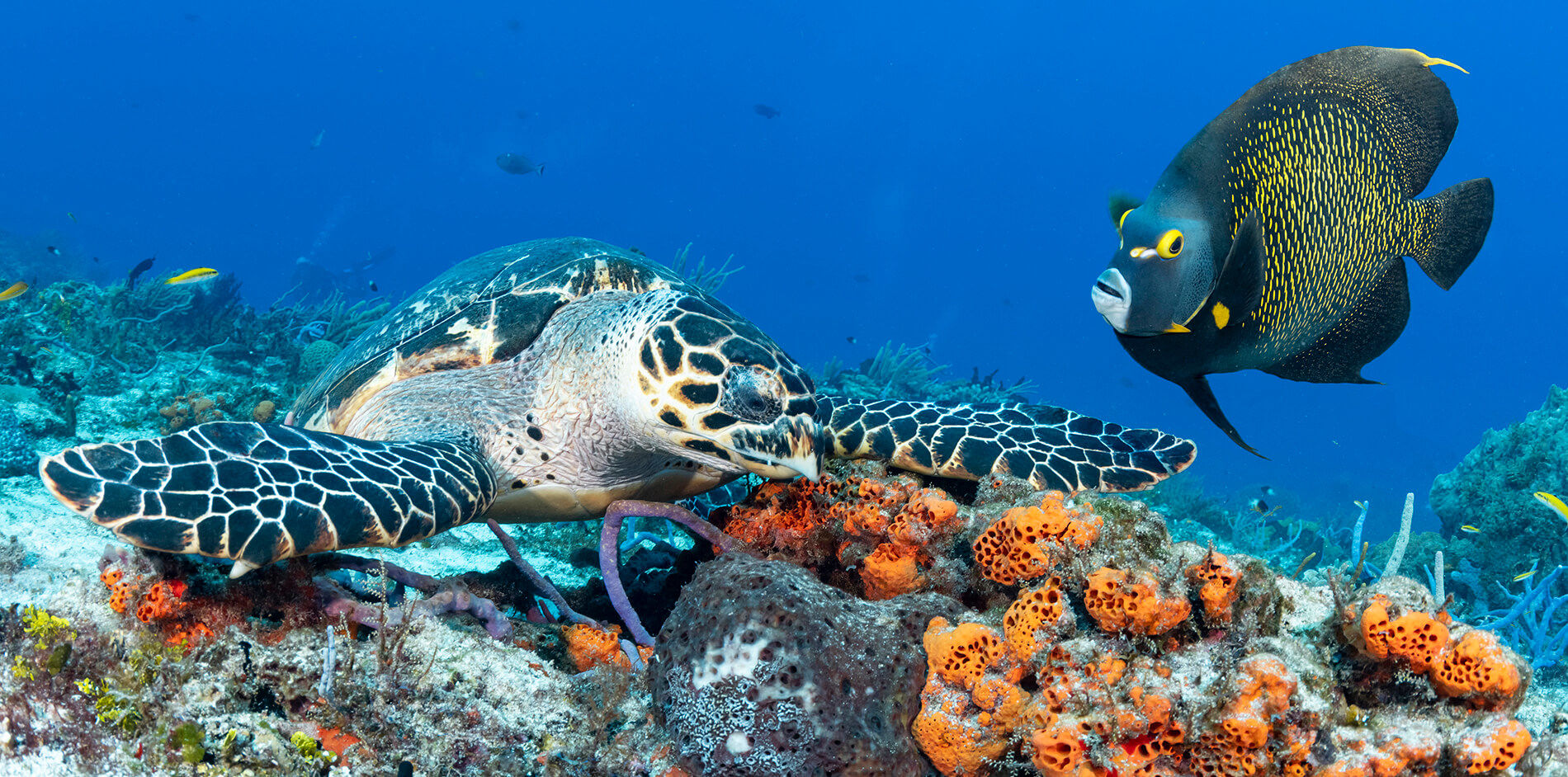
Scuba Club is a longtime favorite with Cozumel divers looking to get the most bottom time for the buck while still enjoying a full range of creature comforts. The food is good, the beds are comfortable and the waterfront location can't be beaten. Each morning, guests make the short walk from rooms or the breakfast buffet to open personal lockers, assemble their gear and step aboard dive boats headed for anyone of the dozens of excellent sites along Cozumel's west coast. Then, after a full day on and under the water, rinsing gear and rehanging wetsuits is quick and convenient chore before heading to happy hour.

The in-house dive operation, Scuba Cozumel, is a full-service dive center with a high-capacity fill station pumping pure air through a four-stage filtering system. This means there's always plenty of full tanks ready to grab and go. The shop stocks a complete line of rental gear, should you need a replacement item and can take care of most basic repairs.


Between the regularly-scheduled morning, afternoon, twilight and night dives, there's plenty of daily opportunities to submerge. And for divers who want even more time on the bottom, there's also unlimited shore diving. Scuba Club is one of the few resorts in Cozumel that is well-suited for shore dives. While many of the south-coast resorts sit on beautiful beaches, getting to a reef involves a long swim across the sand. By contrast, Scuba Club perches on a low limestone ledge, and there's plenty to see beginning within a few fin kicks of the shore.

Gearing up for a shore dive is easy, as there are staging benches close to the water, and two sets of stairs and railings for secure entries and exits. One of these entries leads to a sheltered waist-deep cove that connects to open water by way of a short swim-through tunnel. This makes shore diving a possibility even on the rare days when a strong surge or western swell hits the island.

A few yards from the Scuba Club shore, the seabed drops to depths of 10 to 15 feet in a series of small, jagged ledges and undercuts. This low-profile labyrinth continues out to depths of 25 to 30 feet, offering acres of critter-rich habitat to explore. Numerous nooks and crannies hold lobster, crabs, octopus, a wide variety of juvenile reef fish and prized finds such as frogfish and seahorses. This area is a playground for critter spotters and macro-photographers, who can take advantage of the long bottom times afforded by shallower depths to fill memory cards with plenty of keepers.
This is scuba at its most relaxing. Even the heavy breathers should be able to get an hour or more out of a tank, and the currents that wash Cozumel's deeper reefs are often milder close to shore, so there's no need for hard finning. Divers who move slow and look closely will find plenty of entertainment, from scurrying crustaceans to burrow-building jawfish. And though the big stuff rarely comes this close to shore, there's a good chance of running a pair of angelfish or a cruising turtle, and eagle rays may glide past.


Because of its ever-changing nature, the house reef at Scuba Club shouldn't be thought of as just a check out site or a once-and-done dive. In fact, some of the most interesting times for a shore dive at Scuba Club are at dusk or night. As the sun goes down, many of the familiar daytime reef dwellers begin to bed down for the night, some burrowing into the sand, others seeking out a cozy crevice for the evening. At the same time, the night shift is just beginning to come out, and nocturnal foragers such as crabs, lobster and eels emerge to make their rounds. Colorful characters such as squid may be drawn in by dive lights and a sweep of the beam will reveal glowing eyes of critters that would otherwise not be found.
Make Scuba Club your next vacation destination and we can make all arrangements, from flights to accommodations and on-island activities. To learn more, contact your agent at 800-329-9989 or send a note to sales@caradonna.com.
